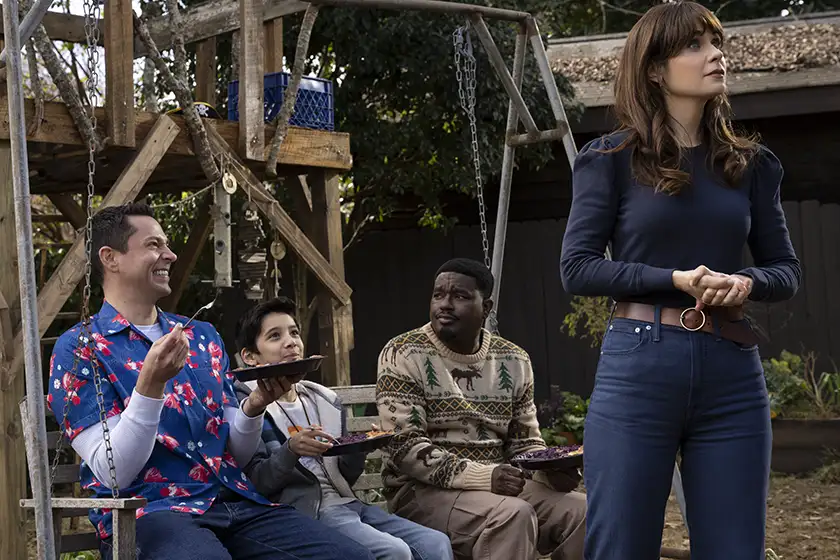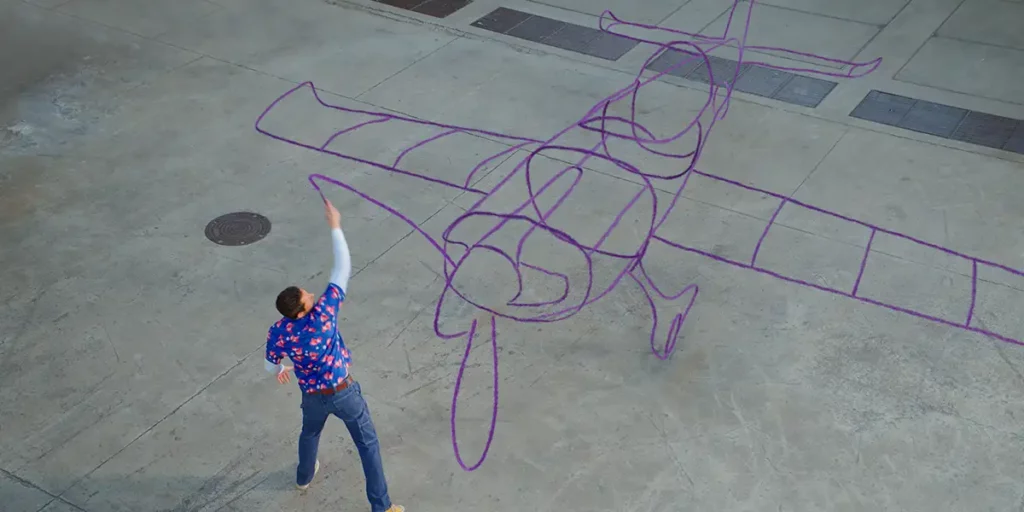With a powerful message and impressive animation, Harold and the Purple Crayon is a film for both children and adults, despite some narrative flaws.
Director: Carlos Saldanha
Genre: Animation, Comedy, Family
Run Time: 92′
Global Release: August 2, 2024
Where to watch: in US theaters and in UK & Irish cinemas
“Life isn’t something that just happens to you, it’s something you create. The trick is in the imagining,” says one of the characters of Harold and the Purple Crayon. If any sentence could sum up the entire message of the movie it would be this one, as the film encourages us to never stop imagining the life we envision for ourselves.
Directed by Carlos Saldanha, the movie interestingly mixes various genres, moving between comedy and fantasy almost seamlessly and also alternates between live-action and animation as the main character travels between our real world and the fantasy one of books and imagination.
Based on a book of the same name, Harold and the Purple Crayon serves as a sequel to the original children’s book. In fact, it follows a now grown-up Harold (Zachary Levi, of Shazam! Fury of the Gods) who, as the title suggests, is a man with a magical purple crayon that makes everything he draws come to life. At the beginning of the movie, Harold decides to leave the pages of his own book to explore the real world and find the Narrator (Alfred Molina, of Spider-Man: No Way Home) of his book who has mysteriously disappeared. As ever, he is accompanied by his friends Moose (Lil Rel Howery, of Free Guy) and Porcupine (Tanya Reynolds, of Emma.) in his latest adventure and finds help in the real world in Terri (Zooey Deschanel, of Dreamin’ Wild), a single mum, and her son Mel (Benjamin Bottani, of Bromates).
A lot of the plot is structured around Harold and his friends’ discovery of the real world. Using a trope that audiences will already be familiar with – with Barbie (2023) most recently or, for example, Enchanted (2007) a few years back – Harold and the Purple Crayon allows its main character to leave the storybook world behind and explore the real one. The narrative trope may not be necessarily new or original, but it still works very well, especially thanks to the visual aspect as Harold’s world looks and feels very different from the real one with its two-dimensional animation and lack of colours. The special effects are impressive as the film creates multiple words – both fantastic and real – for the audience to witness and explore.
Most of the comedy also relies on Harold not really knowing anything about the real world, which leads to some of the most amusing misunderstandings, such as the chaos he inadvertently causes as Terri’s job. Speaking of the comedy side of the film, if the kid sitting next to me during my screening of Harold and the Purple Crayon is anything to go by, it is safe to say that the jokes and funny moments land very well with the children in the audience. As a lot of these films tend to do, there are also various jokes aimed at adults rather than kids: more specifically, all the ones around having a job would probably be better suited for a grown-up audience.

In this sense, Harold and the Purple Crayon strikes the perfect balance between creating something that is primarily aimed at children but also catering to its inevitable adult audience of parents taking their kids to the cinema. This is true of the film’s message as well as it encourages audiences to recognise the power of imagination and, ultimately, of taking ownership over your own life which is also something that can resonate, admittedly in different ways, with both adults and younger audiences.
However, while the concept is compelling, its execution is admittedly flawed. Ultimately, the biggest issue I have with the film is from a storytelling point of view as all its biggest twists and revelations are inevitably too predictable and, therefore, utterly unsurprising. Its villain also feels flat and not as scary or threatening as it should have been, hurting the overall stakes of Harold and the Purple Crayon. The more the film went on in its second half the more I realised that its villain’s motivations are too simplistic and weak, despite being explored well and given more than enough screen time.
Overall, Harold and the Purple Crayon is an enjoyable film, especially for the audience of children it is aimed at, but it can also be appreciated by the adults in the cinema who may like it for an entirely different set of reasons. However, its storytelling flaws cannot be ignored as they ultimately weaken the plot of the entire film. The movie can also become easily forgettable amongst of an array of films trying to do the very same thing and balance a narrative and comedic structure that can be appreciated by both kids and their parents.
Harold and the Purple Crayon will be released in UK & Irish cinemas and in US theaters on August 2, 2024.

